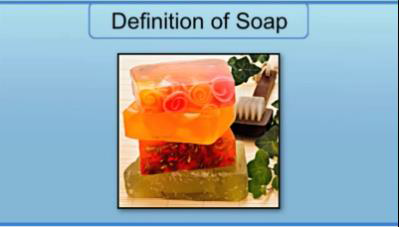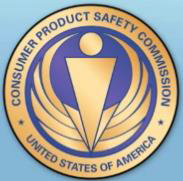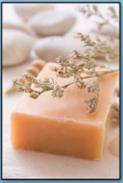Drug and Cosmetic Regulation Basic Overview-SoapUpdated a year ago
Soap is a category that needs special explanation. That’s because the FDA’s Regulatory definition of Soap is different from the way in which people commonly use the word. Products that meet the regulatory definition of soap are exempt from the provisions of the FDCA (The Food, Drug and Cosmetic Act) because even though the definition of a cosmetic includes “articles” for cleansing a later section of act directly and specifically excludes soap from the definition of a cosmetic.

The FDA defines and interprets the term soap to apply only when:
1. The bulk of the non-volatile matter in the product consists of an alkali salt of fatty acids and the products detergent the alkali salt-fatty acid compound. Hot and Cold Process Soap made with oil, water, lye and do not have added detergents meets the FDCA soap exemption.
2. The product is labeled, sold and represented only as soap.
As long as you are not making claims such as moisturizing or acne soap, it is just considered as "soap".
1. The bulk of the non-volatile matter in the product consists of an alkali salt of fatty acids and the products detergent the alkali salt-fatty acid compound. Hot and Cold Process Soap made with oil, water, lye and do not have added detergents meets the FDCA soap exemption.
2. The product is labeled, sold and represented only as soap.
As long as you are not making claims such as moisturizing or acne soap, it is just considered as "soap".
If a product meets the definition of Soap it is regulated by the Consumer Product Safety Commission.

True Soap
 In the United States traditional soap that does not contain detergents and is sold for the sole purpose of cleansing meets the Food, Drug and Cosmetic Act Soap Exemption rule. If you are labeling a bar of soap that meets this exemption you will need to comply with Fair Packaging and Labeling Act and Consumer Protection Safe Commission’s regulations. This includes having on the principle label: Accurate Product Name, Net Quantity in Metric. The secondary label must contain: Directions for Use and Caution/Warning Statements, Business Name and Business Location. For soap that is exempt from FDA regulations you are not required to list the ingredients.
In the United States traditional soap that does not contain detergents and is sold for the sole purpose of cleansing meets the Food, Drug and Cosmetic Act Soap Exemption rule. If you are labeling a bar of soap that meets this exemption you will need to comply with Fair Packaging and Labeling Act and Consumer Protection Safe Commission’s regulations. This includes having on the principle label: Accurate Product Name, Net Quantity in Metric. The secondary label must contain: Directions for Use and Caution/Warning Statements, Business Name and Business Location. For soap that is exempt from FDA regulations you are not required to list the ingredients.
 In the United States traditional soap that does not contain detergents and is sold for the sole purpose of cleansing meets the Food, Drug and Cosmetic Act Soap Exemption rule. If you are labeling a bar of soap that meets this exemption you will need to comply with Fair Packaging and Labeling Act and Consumer Protection Safe Commission’s regulations. This includes having on the principle label: Accurate Product Name, Net Quantity in Metric. The secondary label must contain: Directions for Use and Caution/Warning Statements, Business Name and Business Location. For soap that is exempt from FDA regulations you are not required to list the ingredients.
In the United States traditional soap that does not contain detergents and is sold for the sole purpose of cleansing meets the Food, Drug and Cosmetic Act Soap Exemption rule. If you are labeling a bar of soap that meets this exemption you will need to comply with Fair Packaging and Labeling Act and Consumer Protection Safe Commission’s regulations. This includes having on the principle label: Accurate Product Name, Net Quantity in Metric. The secondary label must contain: Directions for Use and Caution/Warning Statements, Business Name and Business Location. For soap that is exempt from FDA regulations you are not required to list the ingredients. Melt and Pour Soap
Melt and Pour Soap (MP) base is used to make melt and pour soap and is a man-made, commercially produced, water soluble compound formulated for the purpose of cleansing the body.
Melt and Pour Soap is not as clearly defined because there are dozens of Melt and Pour Formulations on the market. Some formulations meet the FDA’s definition of soap while other formulations do not meet the definition. If your Melt and Pour soap contains detergents then the FDA will likely consider it a cosmetic and you will need to follow the FDCA guidelines.
Melt and Pour Soap (MP) base is used to make melt and pour soap and is a man-made, commercially produced, water soluble compound formulated for the purpose of cleansing the body.
Melt and Pour Soap is not as clearly defined because there are dozens of Melt and Pour Formulations on the market. Some formulations meet the FDA’s definition of soap while other formulations do not meet the definition. If your Melt and Pour soap contains detergents then the FDA will likely consider it a cosmetic and you will need to follow the FDCA guidelines.
For example: Crafters Choice Basic and Premium soap bases contain additional detergents while Crafters Choice Detergent Free Soap bases do not contain additional detergents .
Melt and Pour Soap Bases fall within 2 groups. In these bases it’s important to understand which group your soap falls into because each is regulated by a different agency.
Group 1
All Natural Soap Bases – in this group the soap making process is completed during processing. All detergents in these bases are natural by-products of the soap making process. An example of this group would be the Crafters Choice Detergent Free Soaps as well as CP & HP Soap Making.
Group 2
Traditional Soap Bases- These bases contain both natural and man-made ingredients. In these formulas MP Soap Bases produce similar to the All Natural bases but the soap has man made detergents added to the naturally occurring detergents. An example of this group would be the Crafters Choice Basic and Premium Soaps.
All Natural Soap Bases – in this group the soap making process is completed during processing. All detergents in these bases are natural by-products of the soap making process. An example of this group would be the Crafters Choice Detergent Free Soaps as well as CP & HP Soap Making.
Group 2
Traditional Soap Bases- These bases contain both natural and man-made ingredients. In these formulas MP Soap Bases produce similar to the All Natural bases but the soap has man made detergents added to the naturally occurring detergents. An example of this group would be the Crafters Choice Basic and Premium Soaps.